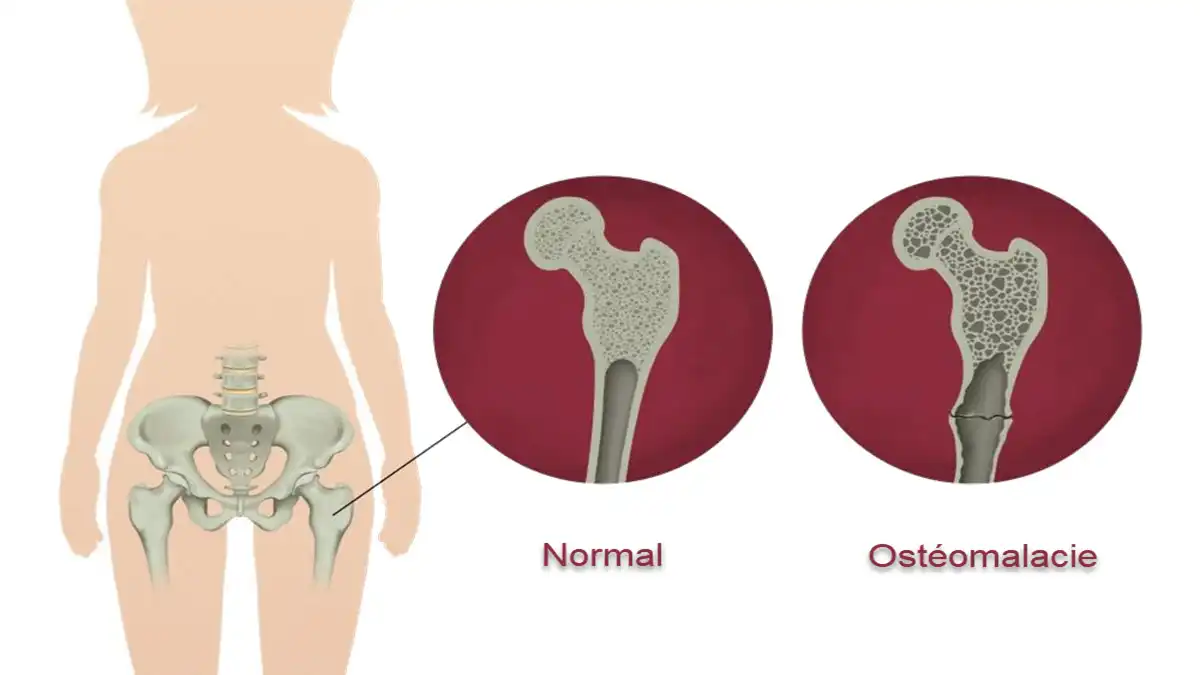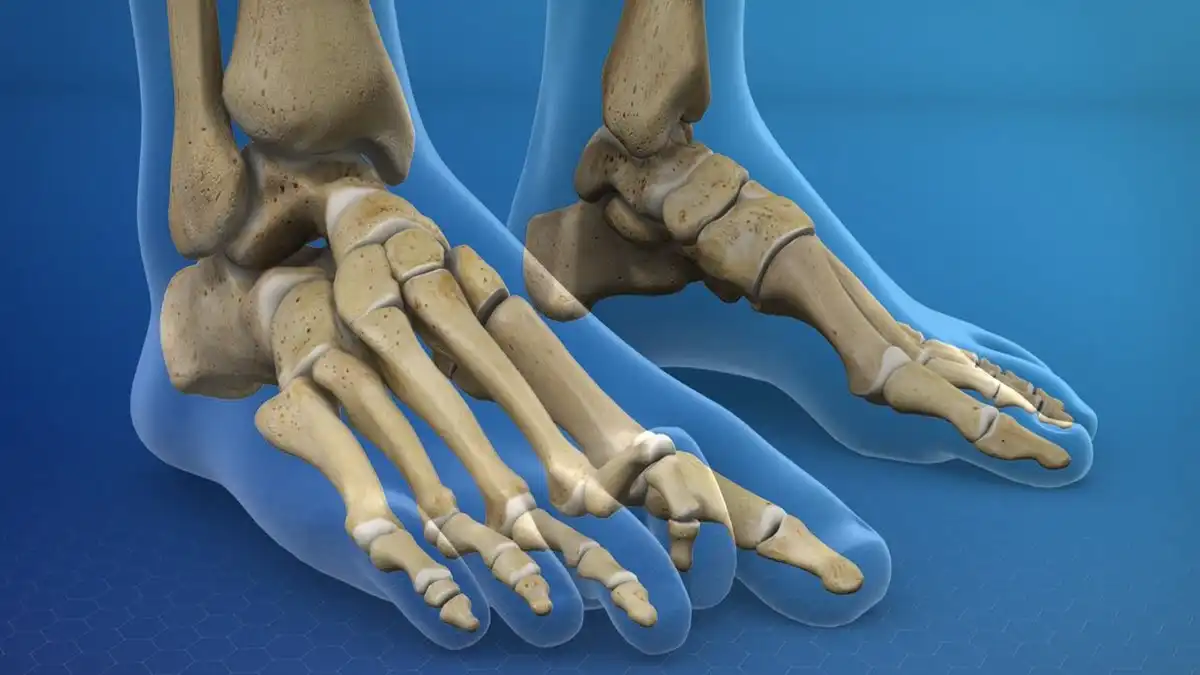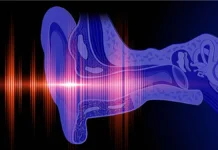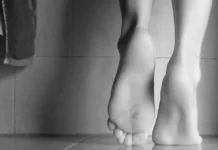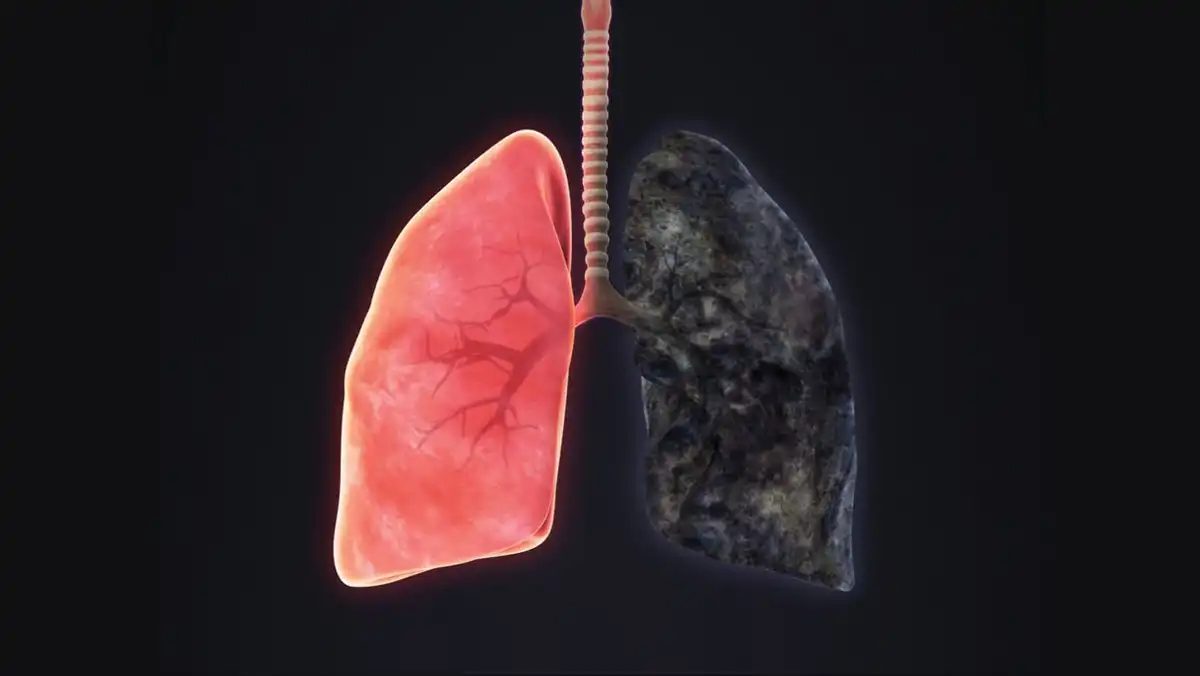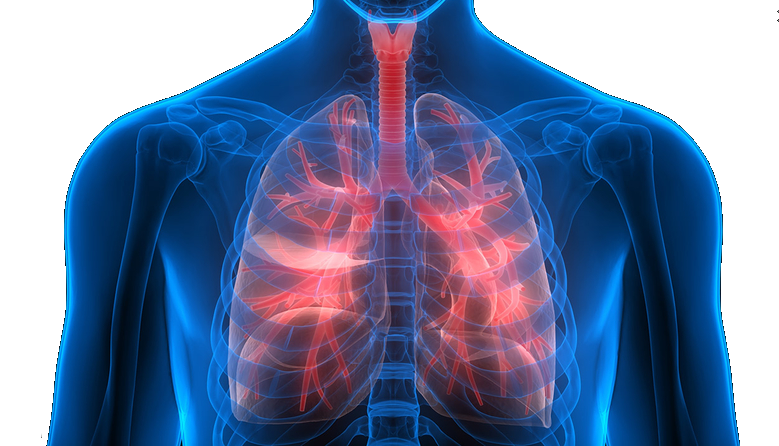Introduction
The “Miller osteopathic chest pump” is a technique used in osteopathy to address respiratory issues and improve chest mobility. It’s named after Arthur Leslie Miller, an influential figure in the field of osteopathy who contributed to the development of osteopathic manipulative treatment (OMT) techniques.
The Miller osteopathic chest pump typically involves gentle, rhythmic movements applied to the rib cage and chest area to enhance breathing mechanics and promote relaxation of the respiratory muscles. This technique aims to mobilize the ribs, improve rib cage expansion, and facilitate the movement of air in and out of the lungs.
During a Miller osteopathic chest pump, the osteopathic physician or practitioner may use their hands to apply gentle pressure and rhythmic movements to different areas of the chest, focusing on areas of restriction or decreased mobility. By releasing tension and restoring normal motion in the chest and rib cage, this technique can help alleviate respiratory symptoms, improve lung function, and promote overall well-being.
The Miller osteopathic chest pump is often incorporated into comprehensive osteopathic treatment plans for conditions such as asthma, chronic obstructive pulmonary disease (COPD), rib dysfunction, and other respiratory ailments. It’s one of many OMT techniques used by osteopathic physicians to address a wide range of health issues and promote the body’s natural healing abilities.
As with any osteopathic treatment, the Miller osteopathic chest pump should be performed by a qualified and experienced practitioner who has undergone specialized training in osteopathic manipulative medicine. This ensures that the technique is applied safely and effectively, taking into account the individual needs and condition of the patient.
Arthur Leslie Miller: A Pioneer in Osteopathic Medicine
Arthur Leslie Miller stands out as a distinguished figure in the realm of osteopathic medicine, leaving behind a legacy of innovation, dedication, and expertise. Born in 1915, Miller’s journey into the world of healthcare began at the Kirksville College of Osteopathic Medicine in Missouri, where he laid the foundation for his illustrious career.
Throughout his life, Miller demonstrated a profound commitment to advancing the principles and practices of osteopathic medicine. Central to his contributions was his pioneering work in osteopathic manipulative treatment (OMT), a cornerstone of osteopathic healthcare. OMT emphasizes the use of hands-on techniques to diagnose, treat, and prevent a wide range of ailments, focusing on restoring the body’s natural ability to heal itself.
One of Miller’s notable achievements was the development of the Miller osteopathic chest pump, a technique designed to address respiratory issues and enhance chest mobility. This technique, bearing his name, reflects his dedication to improving patient care and promoting holistic approaches to wellness. By applying gentle, rhythmic movements to the chest and rib cage, the Miller osteopathic chest pump aims to mobilize the respiratory muscles, improve lung function, and alleviate breathing difficulties. It remains a valuable tool in the repertoire of osteopathic physicians worldwide, embodying Miller’s legacy of innovation and compassion.
Beyond his contributions to clinical practice, Miller played a pivotal role in osteopathic education and research. As a faculty member at various osteopathic medical schools, he shared his knowledge and expertise with aspiring physicians, shaping the next generation of healthcare professionals. Miller’s commitment to education extended beyond the classroom, as he actively engaged in research endeavors to further the understanding of osteopathic principles and techniques. His writings and scholarly contributions enriched the osteopathic literature, providing valuable insights into the efficacy and application of OMT in diverse clinical settings.
Miller’s impact on osteopathic medicine transcended boundaries, influencing the profession both nationally and internationally. His tireless advocacy for the integration of OMT into mainstream healthcare underscored his belief in its potential to improve patient outcomes and enhance the quality of care. Miller’s leadership and vision helped elevate the status of osteopathic medicine, fostering greater recognition and acceptance within the broader medical community.
In addition to his professional accomplishments, Miller was revered for his unwavering commitment to compassionate patient care. He approached each encounter with empathy, treating not just the symptoms but the individual as a whole. Miller’s holistic approach emphasized the interconnectedness of mind, body, and spirit, reflecting the fundamental principles of osteopathic medicine.
As we reflect on Arthur Leslie Miller’s enduring legacy, we are reminded of the profound impact he had on the field of osteopathic medicine. His pioneering spirit, coupled with his unwavering dedication to excellence, continues to inspire generations of osteopathic physicians around the world. Through his innovative techniques, educational initiatives, and compassionate care, Miller left an indelible mark on the healthcare landscape, shaping the future of osteopathic medicine for years to come.
Understanding the Miller Osteopathic Chest Pump: A Comprehensive Guide
Understanding the Miller Osteopathic Chest Pump is crucial for healthcare professionals, particularly those in the field of osteopathic medicine, as it serves as a valuable technique for assisting patients with respiratory conditions. Developed by Dr. Robert E. Miller, this manual therapy approach aims to mobilize respiratory secretions, improve lung function, and promote overall respiratory health. The technique involves rhythmic manual compressions applied to the chest wall, facilitating the movement of mucus and secretions within the lungs and airways.
Indications for the Miller Osteopathic Chest Pump encompass a range of respiratory conditions, including pneumonia, bronchitis, COPD, cystic fibrosis, and asthma. It is also beneficial for patients recovering from surgery or prolonged bed rest, as it helps prevent complications such as atelectasis. By assisting with airway clearance and promoting lung expansion, this technique can alleviate respiratory symptoms and enhance the patient’s ability to breathe comfortably.
Clinical application of the Miller Osteopathic Chest Pump typically involves integrating it into comprehensive treatment plans for respiratory conditions. Osteopathic physicians and other healthcare professionals receive specialized training in manual therapy techniques, ensuring proper technique and proficiency. The technique may be used in combination with other osteopathic modalities, respiratory therapies, and medical interventions to optimize patient outcomes.
The mechanism of action behind the Miller Osteopathic Chest Pump lies in its ability to facilitate the clearance of respiratory secretions through manual manipulation. By applying rhythmic compressions to the chest wall, mucus and secretions are mobilized, making it easier for the patient to expectorate or cough up phlegm. This process improves airway clearance, reduces the risk of respiratory infections, and enhances overall respiratory function.
Evidence supporting the efficacy of the Miller Osteopathic Chest Pump specifically may be limited, but manual chest physiotherapy techniques, including similar approaches used in respiratory care, have demonstrated positive outcomes in various patient populations. Clinical studies have shown that manual chest physiotherapy can improve airway clearance, lung function, and respiratory symptoms, particularly in patients with chronic respiratory conditions.
Patient education plays a crucial role in the success of the Miller Osteopathic Chest Pump therapy. Patients undergoing treatment should receive guidance on proper breathing techniques, relaxation, and self-care strategies to complement the therapy. Empowering patients to actively participate in their respiratory care fosters a sense of autonomy and promotes long-term respiratory health.
While the Miller Osteopathic Chest Pump is generally safe, there are precautions and contraindications to consider. It may not be suitable for patients with rib fractures, severe respiratory distress, or recent chest surgery. Healthcare providers should carefully assess the patient’s medical history and condition before initiating treatment to ensure safety and efficacy.
The Miller Osteopathic Chest Pump is a technique commonly used in osteopathic medicine to assist with clearing respiratory secretions, improving lung function, and promoting overall respiratory health. It is particularly beneficial for patients with conditions such as pneumonia, bronchitis, or asthma. Here’s a comprehensive guide to understanding and performing the Miller Osteopathic Chest Pump:
- Purpose: The primary goal of the Miller Osteopathic Chest Pump is to mobilize and help clear mucus or secretions from the respiratory passages. By using specific manual techniques, osteopaths aim to facilitate the movement of mucus out of the lungs and airways, making it easier for the patient to breathe and reducing the risk of complications such as respiratory infections.
- Technique: The technique involves a series of rhythmic manual compressions and releases applied to the chest wall. Osteopaths typically use their hands or palms to gently compress and release the chest in a coordinated manner. The rhythm and pressure of the compressions may vary depending on the patient’s condition and individual needs.
- Positioning: The patient is usually positioned in a comfortable supine (lying on the back) or semi-supine position. This allows for better access to the chest and facilitates the application of the manual techniques.
- Breathing Coordination: The Miller Osteopathic Chest Pump is often performed in coordination with the patient’s breathing. Osteopaths may instruct the patient to take slow, deep breaths while applying the manual compressions. This helps enhance the effectiveness of the technique by promoting better airflow and lung expansion.
- Frequency and Duration: The frequency and duration of the Miller Osteopathic Chest Pump may vary depending on the patient’s condition and response to treatment. Osteopaths typically recommend a series of sessions spaced out over time to achieve the desired therapeutic effects.
- Precautions and Contraindications: While the Miller Osteopathic Chest Pump is generally safe, there are some precautions and contraindications to consider. It may not be suitable for patients with certain medical conditions such as rib fractures, severe respiratory distress, or recent chest surgery. Osteopaths should always assess the patient’s medical history and condition before performing the technique.
- Benefits: The Miller Osteopathic Chest Pump can provide several benefits, including improved airway clearance, enhanced lung function, reduced respiratory symptoms such as coughing or wheezing, and overall respiratory comfort. It can also help prevent complications such as pneumonia or respiratory infections in high-risk individuals.
- Integration with Other Therapies: The Miller Osteopathic Chest Pump is often used as part of a comprehensive treatment plan that may include other osteopathic techniques, respiratory therapies, medications, and lifestyle modifications. Integrating multiple approaches can optimize outcomes and promote overall respiratory health.
The History and Evolution of the Miller Osteopathic Chest Pump Technique
The Miller Osteopathic Chest Pump technique has a rich history and has evolved over time to become a valuable tool in respiratory care within the field of osteopathic medicine. Developed by Dr. Robert E. Miller, an American osteopathic physician, this technique has undergone refinement and adaptation since its inception in the mid-20th century.
Dr. Robert E. Miller pioneered various manual therapies aimed at improving respiratory function and promoting overall health. His contributions to osteopathic medicine include the development of the Miller Osteopathic Chest Pump technique, which was designed to assist patients with respiratory conditions in clearing mucus and secretions from the lungs and airways.
The technique’s origins can be traced back to Dr. Miller’s observations and experiences in clinical practice. Through hands-on experimentation and clinical application, he refined the manual maneuvers involved in the chest pump technique, optimizing its effectiveness in facilitating airway clearance and improving respiratory function.
As Dr. Miller’s work gained recognition within the osteopathic community, the Miller Osteopathic Chest Pump technique became increasingly integrated into clinical practice. Osteopathic physicians received training in the technique as part of their education and professional development, allowing for widespread dissemination and adoption.
Over time, the Miller Osteopathic Chest Pump technique has evolved to incorporate advancements in medical knowledge and technology. While the fundamental principles of manual chest physiotherapy remain central to the technique, refinements and modifications have been made to enhance its efficacy and safety.
In recent years, the Miller Osteopathic Chest Pump technique has been further validated through clinical research and evidence-based practice. Studies have demonstrated its effectiveness in improving airway clearance, lung function, and respiratory symptoms in various patient populations, including those with chronic respiratory conditions.
The evolution of the Miller Osteopathic Chest Pump technique reflects the ongoing commitment of osteopathic physicians and healthcare professionals to providing comprehensive and effective care for patients with respiratory conditions. By combining traditional manual therapies with contemporary medical knowledge, the technique continues to play a vital role in promoting respiratory health and enhancing patient outcomes.
How Does the Miller Osteopathic Chest Pump Benefit Respiratory Health?
The Miller Osteopathic Chest Pump technique is a cornerstone of respiratory care within osteopathic medicine, offering multifaceted benefits for individuals with various respiratory conditions. Through its rhythmic manual compressions applied to the chest wall, this technique serves as a therapeutic intervention aimed at improving respiratory function, promoting airway clearance, reducing respiratory symptoms, preventing complications, and enhancing overall respiratory health. Understanding how the Miller Osteopathic Chest Pump benefits respiratory health requires a comprehensive exploration of its mechanisms of action, clinical applications, evidence base, and integration into patient care.
At the core of its effectiveness lies the ability of the Miller Osteopathic Chest Pump to mobilize and clear respiratory secretions. By applying rhythmic manual compressions to the chest wall, the technique facilitates the movement of mucus and secretions within the lungs and airways. This mobilization makes it easier for patients to expectorate or cough up mucus, thereby improving airway clearance and reducing the risk of respiratory infections. Furthermore, the gentle yet targeted nature of the manual compressions promotes thoracic mobility and chest wall expansion, enhancing overall respiratory function.
Clinical application of the Miller Osteopathic Chest Pump encompasses a wide range of respiratory conditions, including pneumonia, bronchitis, chronic obstructive pulmonary disease (COPD), asthma, cystic fibrosis, and post-operative respiratory complications. Osteopathic physicians and healthcare professionals utilize this technique as part of comprehensive treatment plans, often integrating it with other modalities such as respiratory therapies, medications, and lifestyle modifications. Its adaptability and effectiveness make it suitable for patients across the lifespan, from infants with respiratory distress to elderly individuals with chronic respiratory conditions.
While specific studies evaluating the Miller Osteopathic Chest Pump may be limited, manual chest physiotherapy techniques, including similar approaches used in respiratory care, have demonstrated positive outcomes in various patient populations. Research has shown that manual chest physiotherapy can improve airway clearance, lung function, and respiratory symptoms, particularly in individuals with chronic respiratory conditions. Furthermore, clinical experience and anecdotal evidence support the efficacy of the Miller Osteopathic Chest Pump in promoting respiratory health and enhancing patient outcomes.
Patient education and engagement play a crucial role in maximizing the benefits of the Miller Osteopathic Chest Pump technique. Patients undergoing treatment should receive guidance on proper breathing techniques, relaxation strategies, and self-care measures to complement the therapy. Empowering patients to actively participate in their respiratory care fosters a sense of ownership and promotes long-term adherence to treatment regimens.
The Miller Osteopathic Chest Pump technique offers several benefits for respiratory health, making it a valuable tool in the management of various respiratory conditions. Here are some ways in which this technique can benefit respiratory health:
- Facilitates Airway Clearance: One of the primary benefits of the Miller Osteopathic Chest Pump is its ability to assist with airway clearance. By applying rhythmic manual compressions to the chest wall, the technique helps mobilize mucus and secretions within the lungs and airways. This facilitates the removal of excess mucus, making it easier for the patient to breathe and reducing the risk of respiratory complications such as infections.
- Improves Lung Function: The manual manipulations involved in the Miller Osteopathic Chest Pump can help improve lung function by promoting better airflow and ventilation. By enhancing lung expansion and reducing airway obstruction, the technique can improve respiratory efficiency and optimize oxygenation of the blood.
- Reduces Respiratory Symptoms: Patients with respiratory conditions such as pneumonia, bronchitis, COPD, asthma, and cystic fibrosis often experience symptoms such as coughing, wheezing, and shortness of breath. The Miller Osteopathic Chest Pump can help alleviate these symptoms by promoting airway clearance and improving respiratory function. This can lead to a reduction in respiratory distress and improved overall comfort for the patient.
- Prevents Complications: Respiratory conditions can sometimes lead to complications such as atelectasis (collapse of lung tissue) or respiratory infections. By assisting with airway clearance and promoting lung expansion, the Miller Osteopathic Chest Pump can help prevent these complications, particularly in patients who are at higher risk due to factors such as prolonged bed rest or recent surgery.
- Enhances Respiratory Comfort: The gentle, rhythmic nature of the Miller Osteopathic Chest Pump technique can have a calming and soothing effect on patients. The manual compressions applied to the chest wall can promote relaxation and reduce muscle tension, leading to improved respiratory comfort and a sense of well-being.
Exploring the Science Behind the Miller Osteopathic Chest Pump
Exploring the science behind the Miller Osteopathic Chest Pump reveals the intricate physiological mechanisms that underlie its therapeutic effects on respiratory health. At its core, this manual therapy technique operates on principles grounded in anatomy, biomechanics, and respiratory physiology. By understanding these scientific foundations, healthcare professionals can appreciate the rationale behind the technique and its clinical application.
The primary goal of the Miller Osteopathic Chest Pump is to facilitate airway clearance by mobilizing respiratory secretions within the lungs and airways. This process involves rhythmic manual compressions applied to the chest wall, which create oscillatory forces capable of dislodging and mobilizing mucus. The compressions induce changes in intrathoracic pressure, promoting airflow and aiding in the movement of mucus towards the larger airways, where it can be expelled through coughing or expectoration.
Anatomically, the chest wall comprises a complex network of bones, muscles, and connective tissues that contribute to respiratory mechanics. The manual compressions of the Miller Osteopathic Chest Pump target specific areas of the chest, including the ribs, intercostal muscles, and diaphragm. By applying controlled pressure and rhythmic movements, osteopathic physicians can optimize chest wall mobility and enhance thoracic expansion, facilitating deeper breathing and improving ventilation.
Biomechanically, the Miller Osteopathic Chest Pump leverages the principles of mechanical percussion and vibration to promote airway clearance. The rhythmic compressions create oscillatory forces that propagate through the chest wall and into the lungs, generating shear stresses within the respiratory mucus. These mechanical forces help break up thickened secretions and enhance their mobility, making them more accessible for removal from the airways.
Respiratory physiology provides further insights into the mechanisms by which the Miller Osteopathic Chest Pump enhances respiratory function. The technique promotes alveolar ventilation by improving lung compliance and reducing airway resistance. By enhancing lung expansion and optimizing gas exchange, it can improve oxygenation and carbon dioxide elimination, leading to improved respiratory efficiency and overall pulmonary function.
Furthermore, the rhythmic manual compressions of the Miller Osteopathic Chest Pump stimulate mechanoreceptors in the chest wall, triggering neural reflexes that modulate respiratory activity. This neurophysiological response may enhance cough reflexes, promote bronchodilation, and modulate autonomic tone, leading to improved respiratory comfort and function.
Clinical research supports the efficacy of manual chest physiotherapy techniques, including the Miller Osteopathic Chest Pump, in improving airway clearance, lung function, and respiratory symptoms. While specific studies evaluating this technique may be limited, its underlying scientific principles align with established concepts in respiratory care and biomechanics.
Step-by-Step Instructions for Performing the Miller Osteopathic Chest Pump
The Miller osteopathic chest pump is a technique used in osteopathic medicine to help improve respiratory function and mobilize secretions in the chest. Here are step-by-step instructions for performing the Miller osteopathic chest pump:
- Positioning:
- Ensure the patient is comfortably positioned in a supine or semi-supine position on the treatment table.
- Explanation and Consent:
- Explain the procedure to the patient, including its purpose and what sensations they may experience. Obtain their consent before proceeding.
- Hand Placement:
- Stand beside the patient at the level of their chest.
- Place one hand over the upper chest, just below the clavicles, with the palm flat and fingers spread out.
- Place the other hand over the lower ribs, just above the abdomen, with the palm flat and fingers spread out.
- Gentle Compression:
- Begin by applying gentle, rhythmic compression to the chest.
- Coordinate the movement of both hands to compress the chest simultaneously.
- Use a downward pressure with the upper hand and an upward pressure with the lower hand.
- Frequency and Depth:
- Aim for a frequency of approximately 60 compressions per minute, similar to the rate of chest compressions in CPR.
- Adjust the depth of compression based on the patient’s comfort level and response.
- The depth should be sufficient to create a gentle but noticeable movement of the chest wall.
- Breathing Guidance:
- Encourage the patient to breathe deeply and slowly during the procedure.
- Coordinate the compressions with the patient’s exhalations, providing additional pressure as they exhale.
- Duration:
- Perform the Miller osteopathic chest pump for a total duration of 2-3 minutes, or as recommended based on the patient’s condition.
- Monitoring:
- Continuously monitor the patient’s response to the technique.
- Observe for any signs of discomfort or distress, and adjust the technique accordingly.
- Feedback and Follow-Up:
- After completing the procedure, provide feedback to the patient based on your observations.
- Discuss any further recommendations or follow-up appointments as needed.
- Documentation:
- Document the procedure in the patient’s medical records, including the technique used, any findings, and the patient’s response.

Common Conditions Treated with the Miller Osteopathic Chest Pump
The Miller osteopathic chest pump technique is a valuable tool used by osteopathic physicians to address a variety of conditions affecting the respiratory system and chest area. Here are some common conditions that can benefit from the application of the Miller osteopathic chest pump:
- Asthma: Asthma is a chronic respiratory condition characterized by inflammation and narrowing of the airways, leading to difficulty breathing, wheezing, and chest tightness. The Miller osteopathic chest pump can help improve respiratory muscle function, enhance lung capacity, and alleviate symptoms associated with asthma attacks.
- Chronic Obstructive Pulmonary Disease (COPD): COPD encompasses a group of progressive lung diseases, including emphysema and chronic bronchitis, which obstruct airflow and cause breathing difficulties. The Miller osteopathic chest pump technique can aid in clearing mucus from the airways, promoting deeper breathing, and enhancing overall lung function in individuals with COPD.
- Costochondritis: Costochondritis is inflammation of the cartilage that connects the ribs to the breastbone (sternum), leading to chest pain and tenderness. The gentle, rhythmic movements of the Miller osteopathic chest pump can help reduce inflammation, alleviate discomfort, and improve mobility in the affected area.
- Rib Dysfunction: Dysfunction or misalignment of the ribs can result in restricted movement, chest pain, and difficulty breathing. The Miller osteopathic chest pump technique can help mobilize the rib cage, restore normal rib motion, and relieve musculoskeletal tension contributing to rib dysfunction.
- Thoracic Spine Dysfunction: Dysfunction in the thoracic spine, such as stiffness, restricted mobility, or vertebral misalignment, can impact respiratory mechanics and chest movement. By promoting thoracic spine mobility and flexibility, the Miller osteopathic chest pump can help improve breathing efficiency and alleviate associated symptoms.
- Postural Imbalances: Poor posture, including rounded shoulders and forward head posture, can contribute to chest tightness and respiratory dysfunction. The Miller osteopathic chest pump technique can aid in correcting postural imbalances, restoring proper alignment, and optimizing chest expansion for more efficient breathing.
- Anxiety and Stress-Related Tension: Anxiety and stress can manifest as tension in the chest and respiratory muscles, leading to shallow breathing and discomfort. The gentle, soothing nature of the Miller osteopathic chest pump can help induce relaxation, release muscle tension, and promote deeper, more diaphragmatic breathing.
- Recovery from Surgery or Injury: Individuals recovering from chest surgery, such as thoracic or cardiac procedures, or chest trauma may benefit from the gentle mobilization and therapeutic effects of the Miller osteopathic chest pump. It can help promote tissue healing, reduce scar tissue formation, and facilitate respiratory recovery.
Exploring Variations and Modifications of the Miller Osteopathic Chest Pump Technique
Exploring variations and modifications of the Miller osteopathic chest pump technique allows for a more tailored approach to meet the diverse needs of patients. Here are some variations and modifications to consider:
- Pressure Intensity:
- Adjust the intensity of pressure based on the patient’s tolerance and response.
- Gentle pressure may be suitable for sensitive patients or those with acute conditions, while firmer pressure may be appropriate for patients with chronic congestion or stiffness.
- Frequency and Rhythm:
- Experiment with different frequencies and rhythms of compression.
- Some patients may benefit from a slower, more rhythmic approach, while others may respond better to a faster, more vigorous rhythm.
- Hand Positioning:
- Explore variations in hand positioning to target specific areas of the chest.
- For example, placing the hands closer to the sternum may provide more direct compression over the central chest, while positioning them laterally may target the outer regions of the chest wall.
- Incorporating Breath Work:
- Coordinate the chest compressions with the patient’s breathing pattern.
- Encourage deep, slow breaths during the technique, and synchronize the compressions with the exhalation phase to enhance relaxation and thoracic mobility.
- Adding Mobilization Techniques:
- Combine the chest pump technique with gentle mobilization techniques, such as rib raising or thoracic spine articulation.
- This can help improve overall chest mobility and enhance the effectiveness of the treatment.
- Use of Props or Supports:
- Experiment with the use of props or supports to optimize patient positioning and comfort.
- For example, placing a rolled towel or cushion under the patient’s upper back can provide additional support and facilitate better access to the chest.
- Integration with Other Osteopathic Techniques:
- Integrate the chest pump technique with other osteopathic techniques tailored to the patient’s specific needs.
- This may include lymphatic drainage, myofascial release, or craniosacral therapy, depending on the presenting symptoms and clinical findings.
- Patient Feedback and Collaboration:
- Seek feedback from the patient throughout the treatment process and adjust the technique accordingly.
- Collaboration with the patient ensures a more personalized approach and fosters a sense of empowerment and engagement in their own healing process.
- Adaptation for Special Populations:
- Modify the technique as needed for special populations, such as pediatric or elderly patients.
- Consider factors such as body size, mobility limitations, and cognitive abilities when tailoring the technique to individual patients.
Case Studies: Successful Applications of the Miller Osteopathic Chest Pump in Clinical Practice
Here are a few case studies showcasing successful applications of the Miller osteopathic chest pump in clinical practice:
- Case Study 1: Respiratory Congestion Relief
- Patient Profile: A 45-year-old female presenting with chronic respiratory congestion due to recurrent bronchitis.
- Intervention: The Miller osteopathic chest pump technique was incorporated into the treatment plan.
- Outcome: After several sessions of chest pump therapy combined with respiratory exercises, the patient reported significant improvement in breathing ease and a reduction in coughing episodes. Follow-up assessments revealed clearer lung sounds and decreased chest congestion.
- Case Study 2: Postoperative Recovery
- Patient Profile: A 60-year-old male recovering from thoracic surgery for lung cancer removal.
- Intervention: Postoperatively, the patient experienced restricted chest movement and discomfort. The Miller osteopathic chest pump technique was utilized to promote chest wall mobility and aid in the clearance of postoperative secretions.
- Outcome: Following a series of chest pump sessions, the patient demonstrated improved chest expansion, decreased pain, and enhanced respiratory function. Physical examination revealed improved lung excursion and reduced signs of atelectasis.
- Case Study 3: Asthma Management
- Patient Profile: A 10-year-old boy with a history of asthma exacerbations and chest tightness.
- Intervention: The Miller osteopathic chest pump technique was integrated into the patient’s asthma management plan to alleviate chest congestion and improve respiratory mechanics.
- Outcome: Through regular chest pump sessions combined with asthma medications and breathing exercises, the patient experienced fewer asthma attacks, reduced use of rescue inhalers, and improved overall lung function. The technique provided symptomatic relief during acute exacerbations and contributed to long-term asthma control.
- Case Study 4: Sports Injury Rehabilitation
- Patient Profile: A 30-year-old athlete recovering from a rib fracture sustained during sports activity.
- Intervention: The Miller osteopathic chest pump technique was employed to facilitate rib cage mobility, reduce pain, and prevent the development of chest tightness and secondary respiratory complications.
- Outcome: Following a course of chest pump therapy in conjunction with targeted rehabilitation exercises, the patient regained full range of motion in the chest, experienced alleviation of pain, and returned to sports activities without respiratory limitations.
Enhancing Athletic Performance with the Miller Osteopathic Chest Pump
Enhancing athletic performance with the Miller osteopathic chest pump technique involves leveraging its ability to optimize respiratory function, increase chest wall mobility, and improve overall biomechanics. Here’s how this technique can benefit athletes:
- Improved Respiratory Efficiency:
- The Miller chest pump technique helps optimize lung function by promoting better ventilation and oxygen exchange.
- Athletes can achieve deeper, more efficient breathing, leading to enhanced endurance and aerobic capacity during physical exertion.
- Enhanced Chest Mobility:
- By mobilizing the ribs and chest wall, the chest pump technique increases thoracic flexibility and range of motion.
- Improved chest mobility allows athletes to achieve fuller expansion of the lungs, facilitating deeper breaths and better oxygen uptake during intense exercise.
- Reduced Risk of Injury:
- Regular application of the chest pump technique can help prevent musculoskeletal injuries by maintaining optimal thoracic mobility and reducing stiffness in the chest and rib cage.
- Enhanced flexibility and mobility in the chest region contribute to better biomechanical alignment and reduced strain on surrounding muscles and joints during athletic activities.
- Facilitated Recovery:
- Incorporating the chest pump technique into post-workout recovery routines promotes relaxation, reduces muscle tension, and accelerates the removal of metabolic waste products from the muscles.
- Improved circulation and lymphatic drainage aid in the clearance of lactate and other byproducts of exercise, reducing muscle soreness and expediting recovery between training sessions.
- Performance Optimization:
- Athletes can use the chest pump technique as part of their pre-competition or pre-training warm-up routine to prepare the respiratory system and enhance overall performance.
- By optimizing respiratory mechanics and chest mobility before activity, athletes can achieve better coordination, agility, and power output during training or competition.
- Integration with Training Protocols:
- Coaches and sports medicine professionals can incorporate the chest pump technique into athletes’ training protocols to address specific biomechanical imbalances or respiratory inefficiencies.
- Customized chest pump exercises can be tailored to target areas of weakness or restriction, helping athletes overcome limitations and maximize their athletic potential.
- Psychological Benefits:
- The rhythmic, meditative nature of the chest pump technique can have calming effects on athletes, helping to reduce pre-competition nerves or performance anxiety.
- Incorporating mindful breathing techniques during chest pump sessions can enhance focus, concentration, and mental clarity, contributing to optimal athletic performance.
Conclusion
In conclusion, the Miller osteopathic chest pump technique stands as a valuable therapeutic intervention in the realm of osteopathic medicine, offering a holistic approach to improving respiratory health and enhancing overall well-being. Developed by Dr. Robert E. Miller and refined over time, this technique exemplifies the principles of manual therapy, biomechanics, and respiratory physiology.
Through gentle, rhythmic compressions applied to the chest wall, the Miller osteopathic chest pump mobilizes respiratory secretions, improves lung function, and promotes airway clearance. Its versatility allows for application in a variety of respiratory conditions, ranging from asthma and COPD to post-operative recovery and stress-related tension.
The scientific rationale underlying the technique underscores its efficacy in addressing respiratory dysfunction and promoting optimal thoracic mobility. By integrating the Miller osteopathic chest pump into comprehensive treatment plans, healthcare professionals can optimize patient outcomes and empower individuals to actively participate in their respiratory care.
As we continue to explore variations, modifications, and successful applications of the Miller osteopathic chest pump, it becomes increasingly evident that this technique holds immense potential in enhancing respiratory health and improving quality of life for patients of all ages and backgrounds. Through ongoing research, education, and clinical practice, we can further advance our understanding and utilization of this valuable therapeutic tool, ultimately contributing to the promotion of respiratory wellness and the advancement of osteopathic medicine as a whole.
References
- Butcher EC, Picker LJ. Lymphocyte homing and homeostasis. Science. 1996;272:60. [PubMed] [Google Scholar]
- Olszewski WL. The lymphatic system in body homeostasis: physiological conditions. Lymphat Res Biol. 2003;1:11–21. [PubMed] [Google Scholar]
- Rockson SD. Lymphedema.Am J Med. 2001;110:288–95. [PubMed] [Google Scholar]
- Davis MJ, Davis AM, Lane MM, Ku CW, Gashev A. Rate-sensitive contractile responses of lymphatic vessels to circumferential stretch. J Physiol. 2009;15587.1:165–82. [PMC free article] [PubMed] [Google Scholar]
- Quick CM, Venugopal AM, Dongaonkar RM, Laine GA, Stewart RH. First-order approximation for the pressure-flow relationship of spontaneously contracting lymphangions. Am J Physiol Heart CircPhysiol. 2008;294:H2144–9. [PubMed] [Google Scholar]
- Knott EM, Tune JD, Stoll ST, Downey HF. Increased lymphatic flow in the thoracic duct during manipulative intervention. J Am Osteopath Assoc. 2005;105:447–56. [PubMed] [Google Scholar]
- Downey HF, Durgam P, Williams AG, Jr, Rajmane A, King HH, Stoll ST. Lymph flow in the thoracic duct of conscious dogs during lymphatic pump treatment, exercise, and expansion of extracellular fluid volume. Lymphat Res Biol. 2008;6:3–13. [PubMed] [Google Scholar]
- Schad H, Brechtelsbauer H. Thoracic duct lymph flow and composition in conscious dogs and the influence of anaesthesia and passive limb movement. Pflugers Arch. 1977;371:25–31. [PubMed] [Google Scholar]
- Hodge LM, King HH, Williams AG, Jr, Reder SJ, Belavadi TJ, Simecka JW, Stoll ST, Downey HF. Abdominal lymphatic pump treatment increases leukocyte count and flux in thoracic duct lymph. Lymphat Res Biol. 2007;5:127–33. [PubMed] [Google Scholar]
- Hodge LM, Bearden MK, Schander A, Huff JB, Williams A, Jr, King HH, Downey HF. Abdominal lymphatic pump treatment mobilizes leukocytes from the gastrointestinal associated lymphoid tissue into lymph. Lymphat Res Biol. 2010;8:103–10. [PMC free article] [PubMed] [Google Scholar]
- Schander A, Downey HF, Hodge LM. Lymphatic Pump Manipulation Mobilizes Inflammatory Mediators into Lymphatic Circulation. Journal of Experimental Biology and Medicine. In Press. [PubMed] [Google Scholar]
- Huff JB, Schander A, Downey HF, Hodge LM. Lymphatic pump treatment enhances the lymphatic release of lymphocytes. Lymphat Res Biol. 2010;8:183–7. [PMC free article] [PubMed] [Google Scholar]
- Wallace E, McPartland JM, Jones JM, III, Kuchera WA, Buser BR. Lymphatic system: lymphatic manipulative techniques. In: Ward RC, editor. Foundations for osteopathic medicine. 2nd ed Lippincott William & Wilkins; Philadelphia: 2003. pp. 1056–77. [Google Scholar]
- Degenhardt BF, Kuchera ML. Update on osteopathic medical concepts and the lymphatic system. J Am Osteopath Assoc. 1996;96:97–100. [PubMed] [Google Scholar]
- Seffinger MA, King HH, Ward RC, Jones JM, Rogers FJ, Ward RC. Foundations forOsteopathic Medicine. Lippincott Williams &Wilkins; Baltimore: 2003. Osteopathic philosophy; pp. 3–12. [Google Scholar]
- Allen TW, Pence TK. The use of the thoracic pump in treatment of lower respiratory tract disease. J Am Osteopath Assoc. 1967;67:408–11. [PubMed] [Google Scholar]
- Kline C. Osteopathic manipulative therapy, antibiotics, and supportive therapy in respiratory infections in children: comparative study. J Am Osteopath Assoc. 1965;65:278–81. [PubMed] [Google Scholar]
- Noll DR, Degenhardt BF, Morely TF, Blais FX, Hortos KA, Hensel K, Johnson JC, Pasta DJ, Stoll T. Efficacy of osteopathic manipulation as an adjunctive therapy for hospitalized patients with pneumonia: a randomized controlled trial. Osteopath Med Prim Care. 2010;4:2. [PMC free article] [PubMed] [Google Scholar]
- Dery M, Winterson B, Yonuschot G. The effect of lymphatic pump manipulation on the healthy and injured rat. Lymphology. 2000;33:58–61. [PubMed] [Google Scholar]
- Castlio Y, Ferris-Swift L. Effects of splenic stimulation in normal individuals on the active and differential blood cell counts and the opsonotic index. Kansas City College of Osteopathy and Surgery. 1932;16:10–6. [Google Scholar]
- Mesina J, Hampton D, Evans R, Ziegler T, Mikeska C, Thomas K, Ferretti J. Transient basophilia following the application of lymphatic pump techniques: a pilot study. J Am Osteopath Assoc. 1998;98:91–4. [PubMed] [Google Scholar]
- Castlio Y, Ferris-Swift L. The effect of direct splenic stimulation on the cells and antibody content of the bloodstream in acute infectious disease. Kansas City College of Osteopathy and Surgery. 1934;18:196–211. [Google Scholar]
- Davidson MT, Deitch EA, Lu Q, Osband A, Feketeova E, Németh ZH, Haskó G, Xu DZ. A study of the biologic activity of trauma-hemorrhagic shock mesenteric lymph over time and the relative role of cytokines. Surgery. 2004;136:32–41. [PubMed] [Google Scholar]
- Measel JW., Jr The effect of lymphatic pump on the immune response: preliminary studies on the antibody response to pneumococcal polysaccharide assayed by bacterial agglutination and passive hemagglutination. J Am Osteopath Assoc. 1982;82:28–31. [PubMed] [Google Scholar]
- Jackson KM, Steele TF, Dugan EP, Kukulka G, Blue W, Roberts A. Effect of lymphatic and splenic pump techniques on the antibody response to Hepatitis B vaccine: a pilot study. J Am Osteopath Assoc. 1998;98:155–60. [PubMed] [Google Scholar]
- Patterson MM. The Coming Influenza Pandemic: lessons from the past for the future. J Am Osteopath Assoc. 2005;105:498–500. [PubMed] [Google Scholar]
- Yoshikawa TT. Antimicrobial resistance and aging: beginning of the end of the antimicrobial era. Journal of the American Geriatric Society. 2002;50:S226–S229. [PubMed] [Google Scholar]
- Gao YJ, Ji RR. Light touch induces ERK activation in superficial dorsal horn neurons after inflammation: involvement of spinal astrocytes and JNK signaling in touch-evoked central sensitization and mechanical allodynia. J Neurochem. 2010 Oct;115(2):505–514. [PMC free article] [PubMed] [Google Scholar]
- So PS, Jiang Y, Qin Y. Touch therapies for pain relief in adults. The Cochrane Library. 2008;4:1–45. [PubMed] [Google Scholar]
- Schander A, Gummelt KL, Hodge LM. Lymphatic pump technique facilitates the clearance of respiratory infection with Streptococcus pneumoniae. J Am Osteopath Assoc. 2011;111:506–7. [Google Scholar]














